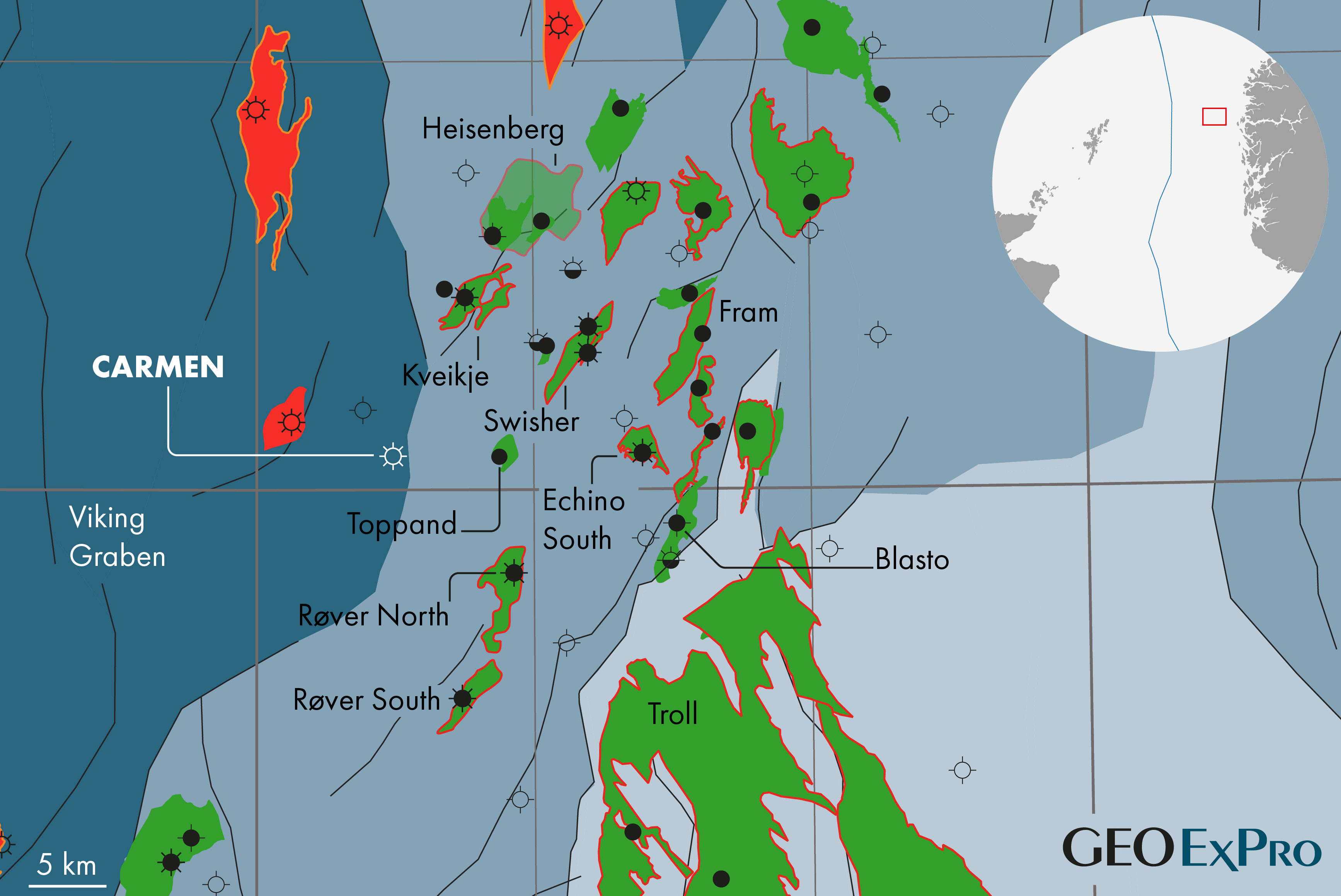“Norway is the gift that keeps on giving,” said DNO’s Executive Chairman Bijan Mossavar-Rahmani in a press release last week, when the discovery of gas and condensate in well 35/10-10A was announced by the Oslo-based company.
According to DNO, which owns a 30% interest in licence PL1148, the gross recoverable resource of the Carmen discovery ranges between 120 and 230 MMboe. With a P50 of 175 MMboe, the discovery ranks as the largest in the previous ten years. The Wisting discovery from 2013 stands at around 427 MMboe.
North of Troll
If it is Norway that keeps on giving, it is especially the area north of Troll. The 35/10-10A well is just the next success in a string of recent discoveries in the area, from the “early” Blasto and Echino South discoveries in 2019 and 2020 to Kveikje, Heisenberg and Røver South more recently.
It would therefore be a logical step to include Carmen in the FANTA development plan, as the area is known. FANTA stands for Fram and North of Troll area and aims to connect the recent North of Troll discoveries into one development strategy.
Equinor is obviously the biggest player in the region, and is also the operator of most exploration wells. With Carmen operated by Wellesley (50%) and Equinor only having a 10% stake, it seems likely for Equinor to acquire Wellesley’s stake in the licence if Carmen is to be included in the FANTA development. In March this year, Equinor already acquired (most of) Wellesley’s stakes in the Røver North, Røver South and Toppand discoveries.

Towards the graben edge
With 35/10-10A being located quite far to the west, towards the margin of the Viking Graben, the Middle to Lower Jurassic reservoirs are likely to be fairly deeply buried. This also explains why Wellesley classified Carmen as an HP/HT prospect.
The main reservoirs are probably the Brent sandstones, including the Oseberg Formation, with a possible contribution from the Cook Fm as well. Given that DNO announced a deeper contact than initially anticipated, it is even more likely that the Cook is also hydrocarbon-bearing.
Based on this, Carmen could be the deepest find in the North of Troll area thus far. The hydrocarbon type differs from the other discoveries in the area, with oil being the dominant fluid in previous finds whilst gas and condensate is the reported result in Carmen. This might therefore put a challenge to the integration of Carmen into the FANTA development plan.

